➡️28. Habilclinic: EDINT Application Handbook
The EDINT tests (Intellectual Development Scales) help in the detection of high ability students by measuring mental abilities that reflect the structure of intelligence.
Before reading the specific EDINT test manual, it is essential that you carefully read the following article which explains the logistics of applying the Habilclinic tests.
Habilclinic: Everything you need to know to apply the tests
Here are the specific considerations for this tool.
Specific manual
Aim: To measure a set of mental abilities that reflect the structure of intelligence and are organised as follows:
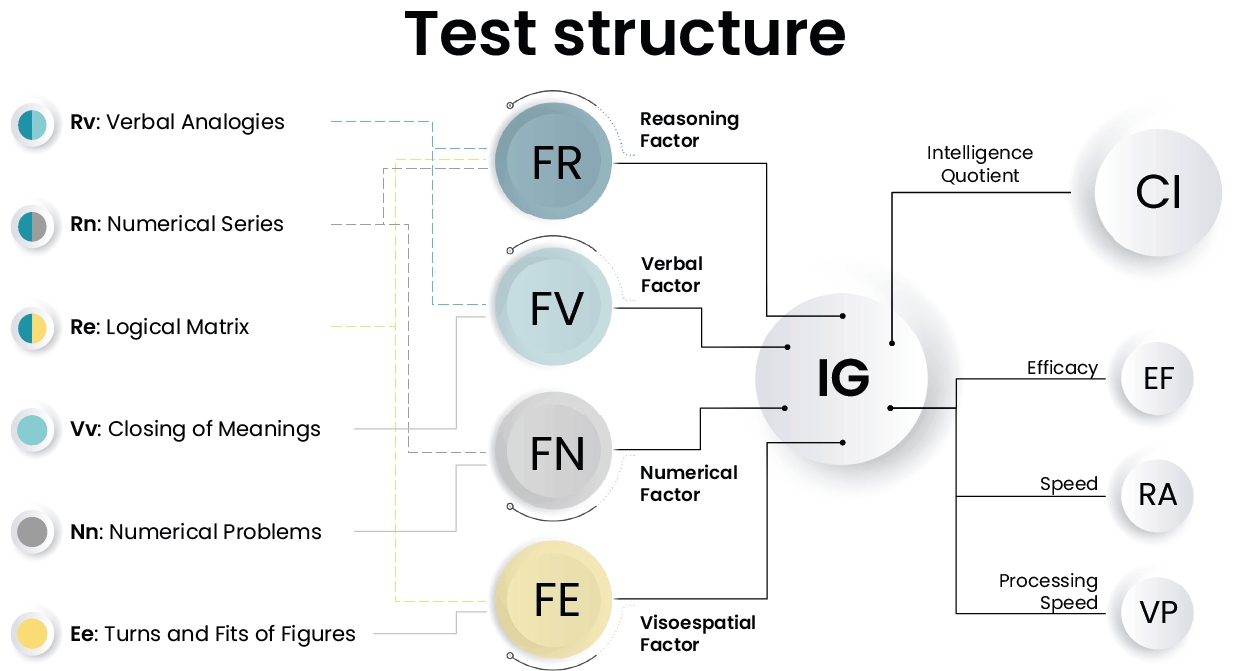
Utility:
To obtain the Intellectual Quotient (IQ) of the patient.
To obtain objective information on the patient's cognitive level.
Efficiently detect if the patient might need a more specific intervention.
To detect patients with high abilities.
Aimed at: The test is organised in 6 levels, according to the age of the patients. It can be applied to patients from 3 years and 6 months to adult.
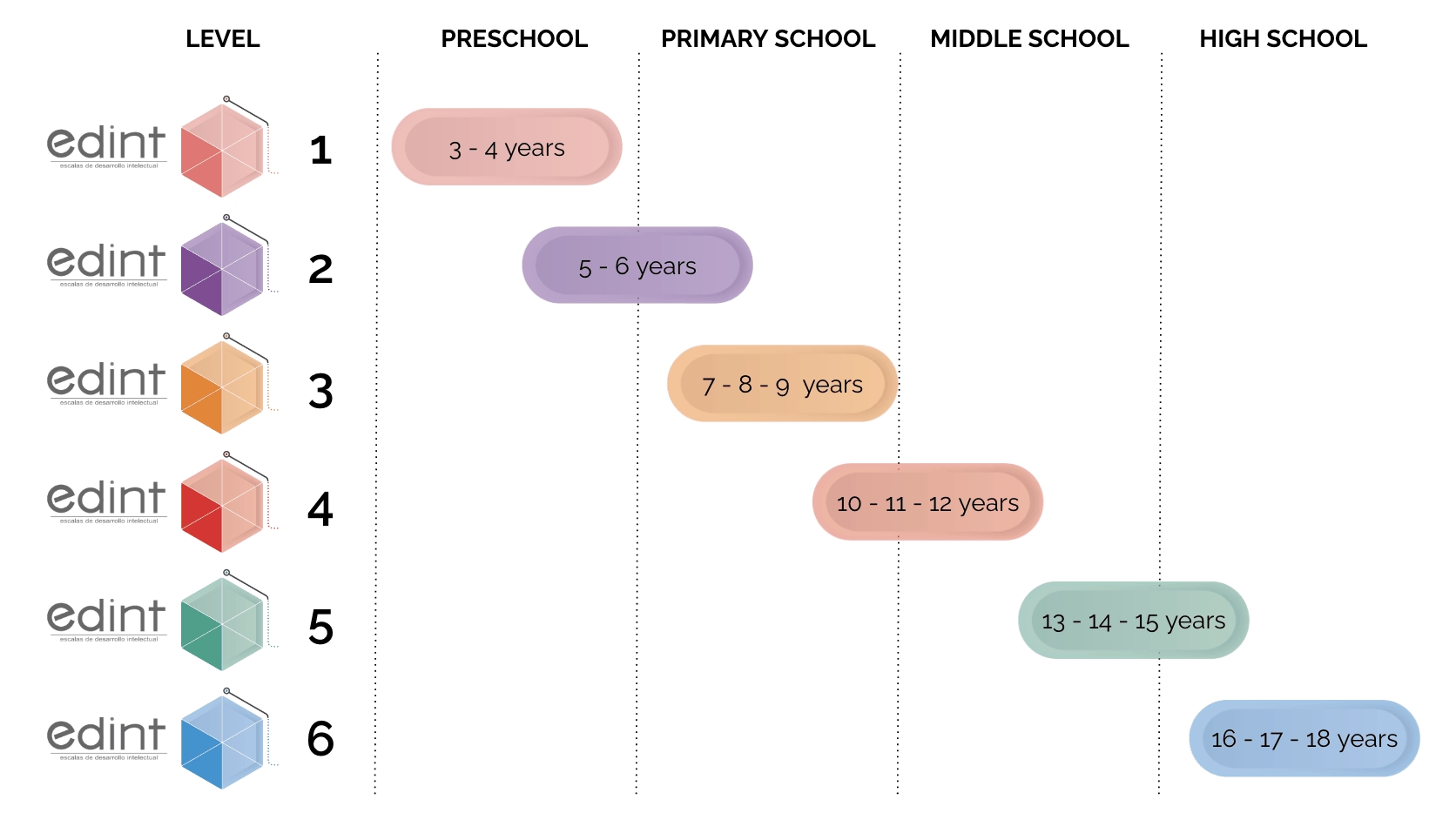
Duration:
Level 1 and 2: 30 minutes.
Levels from 3 to 6: 42 minutes.
Specific materials and resources: Headset headphones only for EDINT levels 1, 2 and 3 (from Kindergarten to 3rd grade of Primary). Although in the case of the youngest children, the audio can be used directly if the application is individual.
Specific indications for EDINT levels 1 and 2 (in some cases EDINT 3):
It is important that the psychologist is perceptive towards the rhythm of the younger patient. If signs of fatigue are observed, it is best to conclude the current challenge and suspend the test to continue the next day, preferably at the same time. The results of completed challenges will be saved.
The patient should be supported by entering his or her data in the corresponding screens, as mentioned below. The EDINT 1 patient can also be assisted with mouse operation.
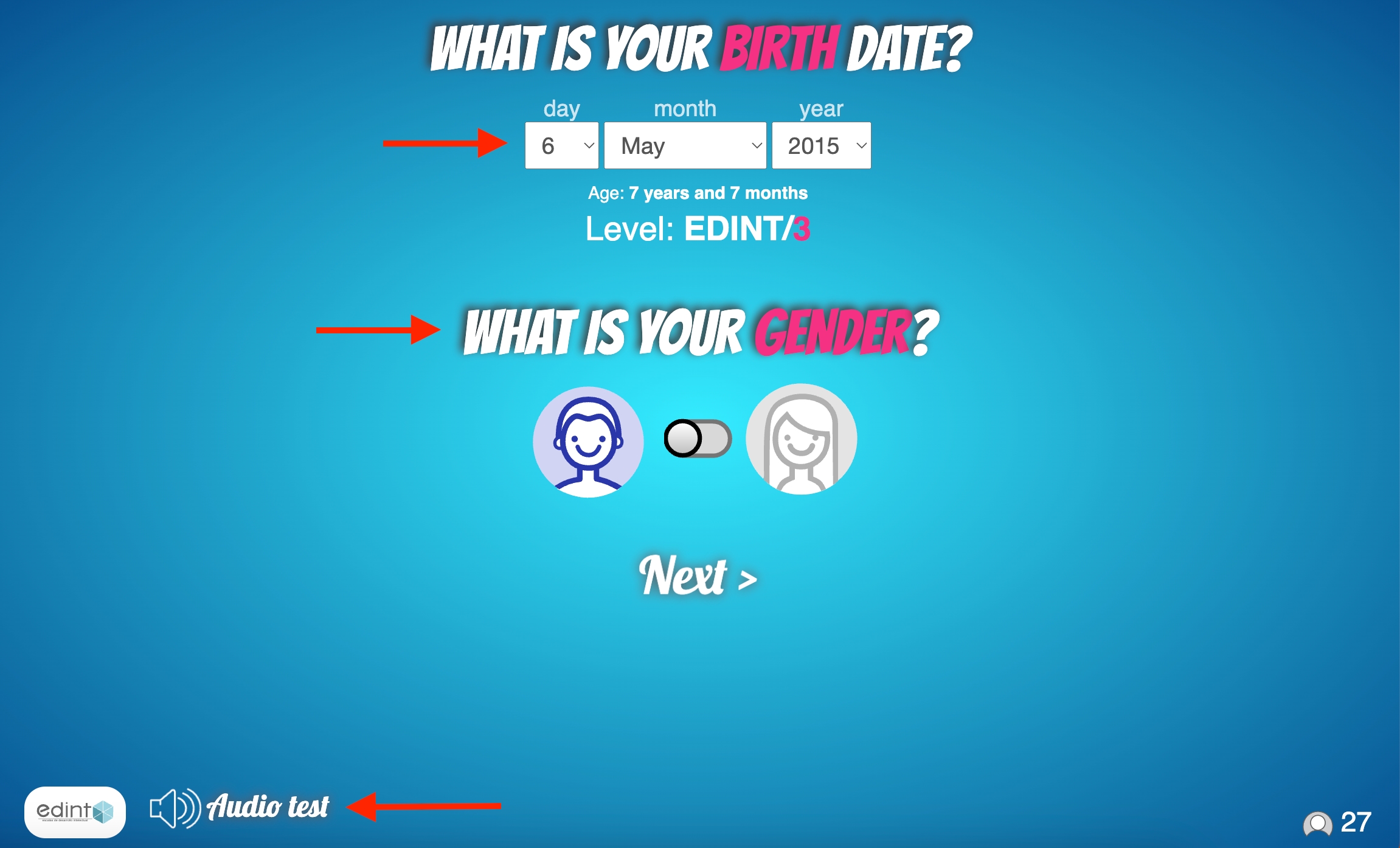
Once their data has been entered, the EDINT 1, 2 and 3 patient will be shown the following screen:
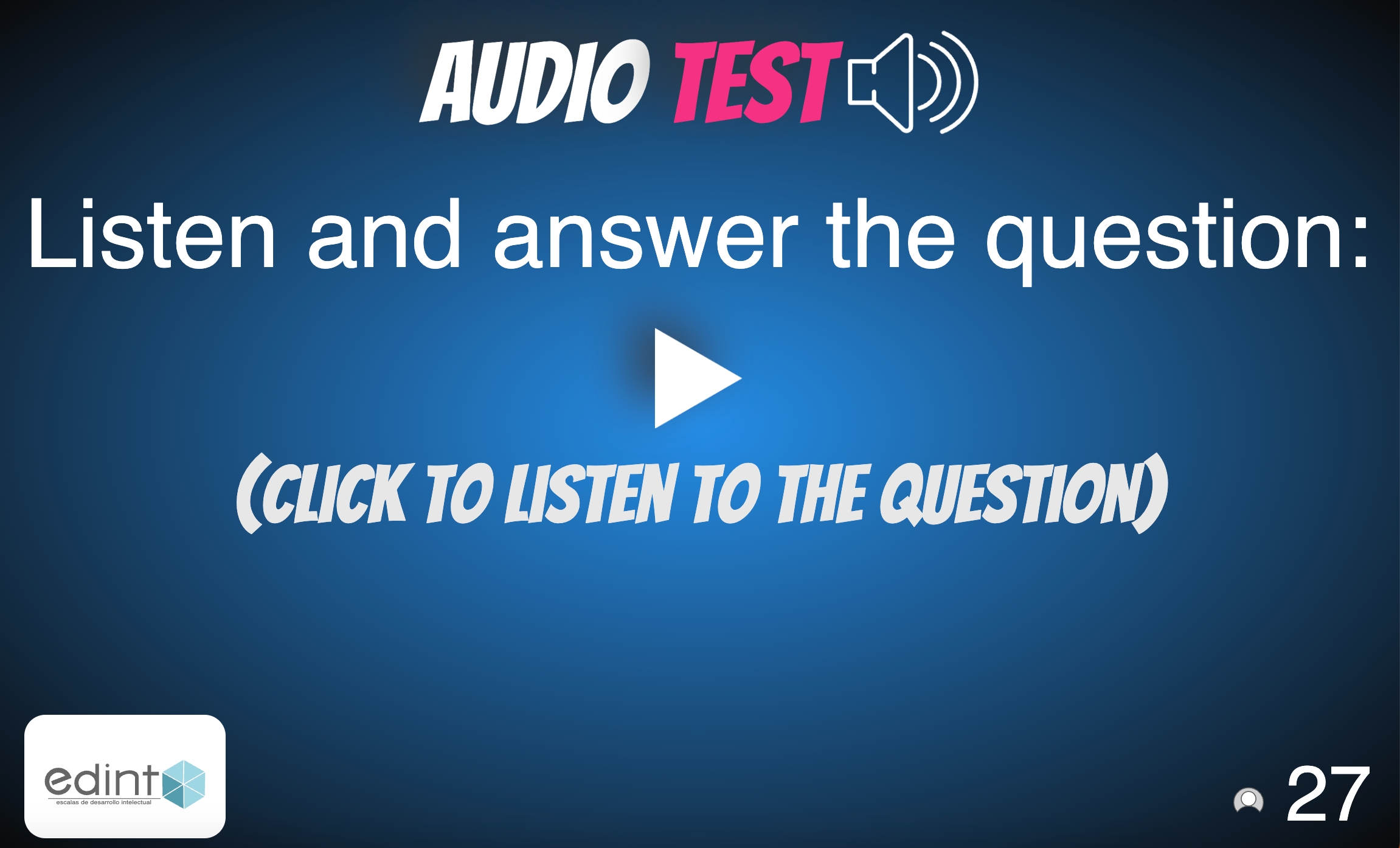
There is no time limit for the test, but there is a time limit for answering each question. The patient is given 30 seconds to answer each question. If the patient does not answer, the next item is automatically passed on to the next one.
If headphones or audio are not available, the psychologist will have to read the questions up to 2 times if the patient states that he/she did not understand the first time.
By clicking on the loudspeaker button, the statement of the question can be repeated a second time.
It is necessary to explain the examples of each challenge, making sure that the instructions are clear, before the patient continues.
Specific indications on the application:
The test is administered in a single session (with the exception of EDINT 1, 2 and 3, as mentioned above).
The application of the test is carried out in the clinic in person. If the test is administered remotely, it is recommended that it be administered from the 4th grade of primary school onwards in patients who show high abilities.
It is recommended to guide and explain only up to the resolution of the examples of the first challenge so that the patient understands the dynamics of the test and knows how the platform works.
It is not allowed to use any separate sheet of paper, neither in the numerical tests nor in any other test, to operate or to make any scheme or drawing. The operations must always be done mentally.
Once the data (date of birth and sex) have been entered, the patient must select the first test "Verbal Analogies" and click on "next". He/she will return to this same screen once the first test has been completed. Then, he/she should select the next one and so on until he/she is finished.
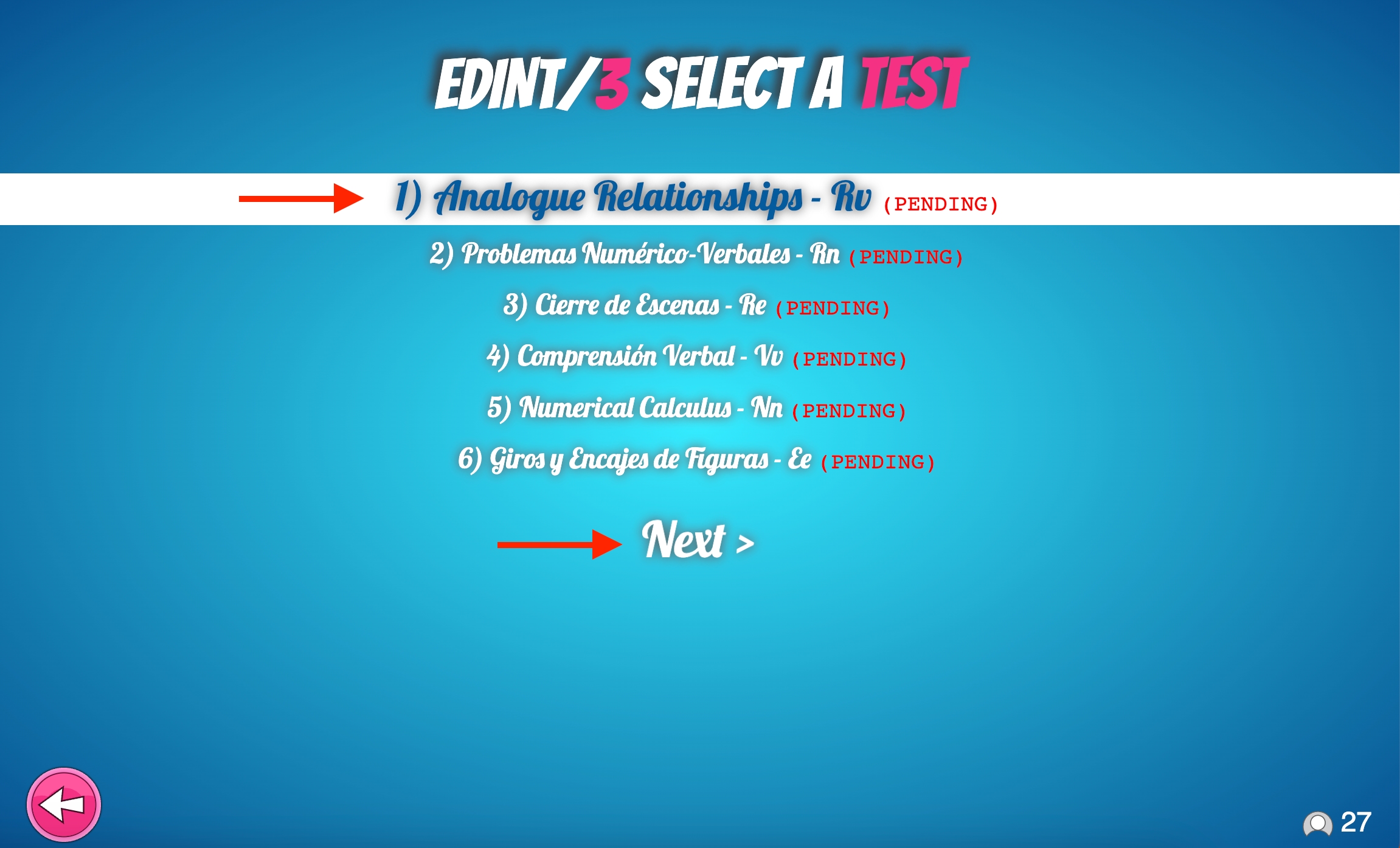
We suggest some ideas to explain and introduce the patient to the task he/she is about to perform:
"You are going to perform some exercises that will allow you to learn about different aspects. (We can roughly explain that intellectual skills are the tools they use to acquire knowledge)."
"This is not an academic exam".
"You are going to take a series of tests. Each test has a maximum time limit. You won't be able to move on to the next test just because you finish first, so you should concentrate and not be in too much of a hurry to finish".
"Each test has explanations beforehand and two examples so that you know how to solve it. The time does not run while you read the explanations. You should read them very carefully as many times as necessary before you start doing the tests".
"Some challenges may be too difficult and you may not be able to answer them; this is normal, so don't worry. The important thing is to try to do your best".
"We will start at the same time and read the instructions of the first challenge together so that we can explain how the platform works". (The following questions should be answered: How do you read the instructions? Where does the time countdown appear? How do you move from question to question?)
"It is very important to maintain a climate of respect and concentration, for which silence is essential and only open the microphone (if the application is remote) in case you want to ask the psychologist any questions".
In order for the patient to know how to navigate within the test, you can explain the functionality of the test before starting to answer the questionnaire.
"First of all, a time countdown appears.
"You will have 30 seconds to answer each question. If the time runs out, the next question will automatically appear".
"You can read the instructions again, but the time will continue to run.
"The 'previous and next' arrows allow you to navigate between questions".
"At the top, the number of questions in the challenge is displayed".
"When you have solved all the questions in the same challenge or when you have run out of time, the "Test completed" screen will appear, then you can continue to the next challenge".
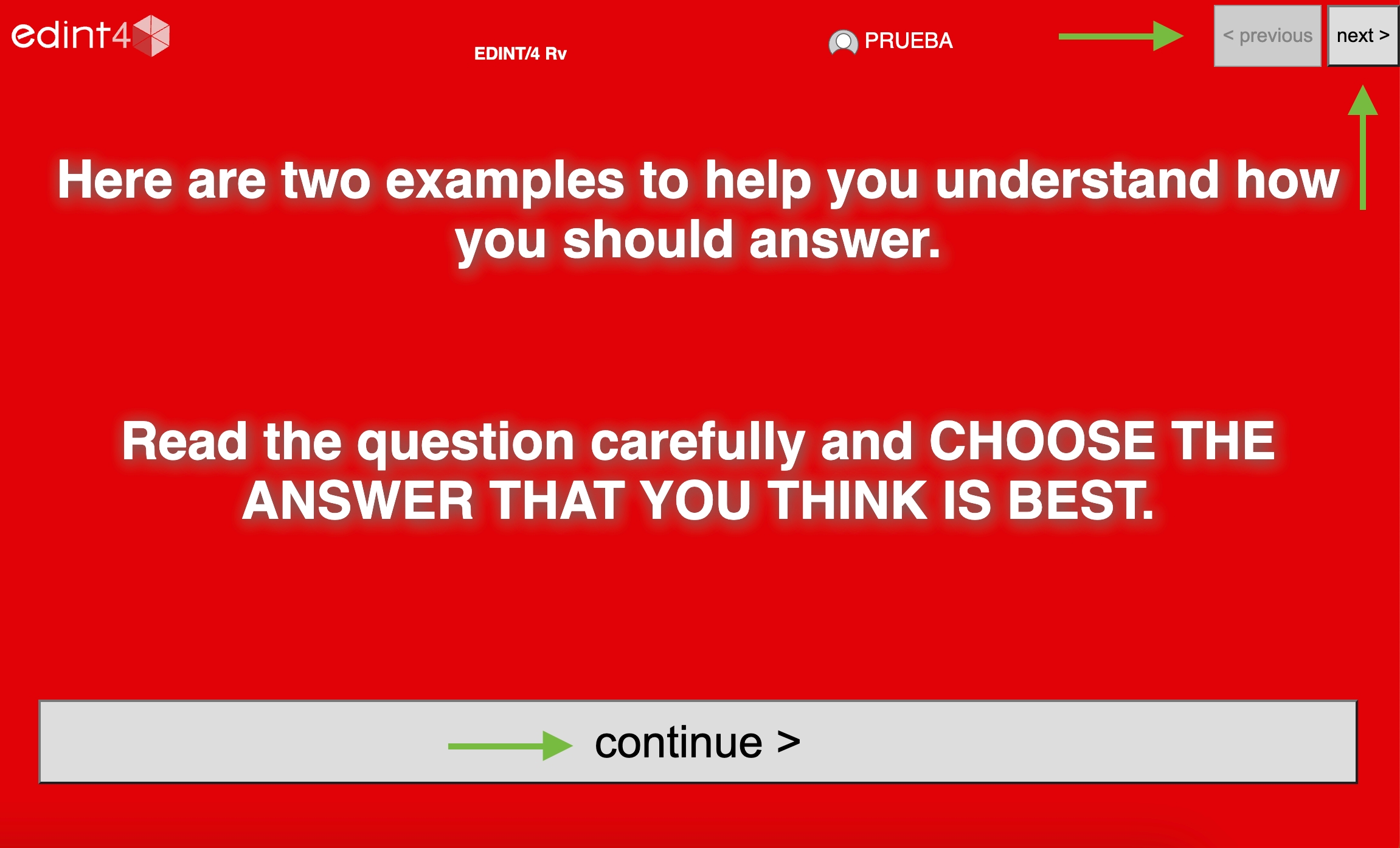
Once the patient has finished the test, the session will be automatically closed. The results will be immediately processed on the platform for consultation.
Última actualización
¿Te fue útil?